This article was co-authored by Alex Dimitriu, MD. Alex Dimitriu, MD is the Owner of Menlo Park Psychiatry and Sleep Medicine, a clinic based in the San Francisco Bay Area with expertise in psychiatry, sleep, and transformational therapy. Alex earned his Doctor of Medicine from Stony Brook University in 2005 and graduated from the Stanford University School of Medicine's Sleep Medicine Residency Program in 2010. Professionally, Alex has dual board certification in psychiatry and sleep medicine.
There are 10 references cited in this article, which can be found at the bottom of the page.
This article has been viewed 46,919 times.
Whether you have a long layover or your flight’s been delayed, sleeping at the airport can help pass the time and keep you fresh for the rest of your travel. Unfortunately, airports are noisy, bright environments that are not always conducive to sleep. By finding a good place to rest, getting comfortable and bringing creature comforts from home, you can fall asleep quickly and easily.
Steps
Falling Asleep Quickly
-
1Cover your eyes. The darker your environment, the easier it will be to sleep.[1] You can make it darker by covering your eyes with the edge of your hood or a scarf. If you don’t have any clothing to cover them with, hold your head in your hand with your palm covering your eyes. This will create a dimmer, sleep-friendly environment.
- It can be helpful to prop your elbow on a firm surface, such as an armrest, to give your head extra support as you sleep.
-
2Add or remove layers for comfort. Note whether you’re too hot, too cold or just right. If you feel warm, remove a layer so you’re more comfortable. If you feel cold, take a layer out of your carry-on and put it on, so you can rest easier.[2]
- A scarf or travel jacket can double as a blanket. Often covering your arms and torso will make your whole body feel warmer. It also feels a bit more like being home with a blanket, which can be comforting.
- It's usually easier to fall asleep if you're slightly cool.[3]
Advertisement -
3Use headphones. Block out loud announcements and create some ambient noise for yourself by using headphones. You can listen to music or do a guided meditation to help yourself fall asleep faster.[4]
- There are many free apps on your phone that can help you relax and fall asleep quickly, such as Deep Sleep and Relax Free.
-
4Set an alarm on your phone. Set an alarm for at least half an hour before boarding. Even delayed flights can get back on schedule if mechanical or other issues are resolved. Ensure that your phone is charged, and err on the side of caution by waking up too early, rather than right before boarding completes.[5]
- If you’re the type to sleep through an alarm, set a few to make sure you don’t just hit snooze and miss your flight.
Finding a Place to Sleep
-
1Stay close to your gate. Staying close to your gate will keep you apprised of any changes in your flight status. When scoping out a place to rest, stay within the concourse of your flight and do not leave the terminal. It can be helpful to keep your gate within your sight, so you can be close by if your flight gets back on schedule.[6]
-
2Locate rows of seats without armrests. You’ll get the best rest possible if you can lie down. Look for benches or rows of seats without armrests in the terminal so you can stretch out and rest most comfortably.
- Be sure not to block any seats that are set aside for handicapped passengers.
-
3Lay a scarf or jacket out on a clean, carpeted area if necessary. In the absence of a good bench or seat, look for a corner out of the way that’s carpeted. The cleanest spots will be those without high foot traffic. Laying down a scarf or jacket can provide a nice barrier between you and the ground.
- Be sure not to lie down in main walkways or areas of high traffic. You don’t want to block access to anything, and you’ll get better sleep if you’re not disturbed.
-
4Find a quiet place that’s not isolated. Seek out quieter spaces between gates or near the food court to catch some Zs. The key is finding an area that isn’t overly loud but is also not isolated. While prayer rooms, yoga areas and other less-frequented airport rooms can seem like good sleeping spots, you’re more likely to be a target of theft if there is no one else around.[7]
-
5Seek out somewhere dim. Choose a sleeping spot away from the windows where natural daylight can keep you awake.[8] Strive for a spot that isn’t underneath a bright ceiling fixture either. Corners and laptop-charging areas are often dimmer and therefore better for sleeping.
-
6Ask about sleeping facilities or loungers. Many newer airports, particularly international ones, have areas with sleeping pods or loungers for passengers in transit. Locate the airport customer service desk and ask if they have any such facilities. These are often available for free or a nominal hourly fee.[9]
- Going to another concourse or terminal is risky if your flight is only delayed. It’s best to use this strategy on a long layover for a scheduled flight.
-
7Purchase lounge access if possible. Many airline lounges provide facilities to shower, eat and rest. If you have a long layover, it can be worth it to purchase a day pass to the lounge where you can sleep in a comfortable recliner. Most of these passes cost at least $50, and the lounges are typically only open to passengers who hold a same-day ticket on that particular airline.[10]
- Some airline credit cards include perks, such as free lounge passes. If you’re a frequent traveler, this might make sense for you.
Getting Comfortable
-
1Secure your valuables or buy a locker. Place any critical valuables, such as your passport or wallet, in the interior pocket of your jacket. Wear any small valuables, such as watches or earrings, so they’re attached to you. For larger valuable items, such as your laptop or tablet, it can be helpful to secure a locker. This way you can fall asleep quickly, knowing your things are safe.[11]
-
2Create a makeshift pillow. Use your bag or a balled-up jacket as a pillow. This can relieve pressure on your neck and allow you to relax more fully. It can help to turn a rough jacket inside out, so that the softer lining is against your face.
- There are often neck pillows for purchase at news shops, if you find yourself in need of a pillow and unable to fall asleep.
-
3Choose an ergonomic sleeping position. For your rest to be most restorative, you’ll want to support your spine as you sleep. Lie on your back and place a balled-up jacket or backpack underneath your knees. This will help maintain the curve of your lower back and minimize soreness upon waking. If you can only fall asleep on your stomach, roll a jacket and place it underneath your hips for a more neutral spine position.[12]
- If you have to sleep sitting up, sit with your back against a wall and your legs crossed. Ball up your jacket and place in between your lower back and the wall for more spinal support. If you have another layer to spare, add some padding behind your neck.[13]
-
4Use the restroom before laying down. Taking care of your basic needs helps your body relax and get ready for sleep. Even though it’s annoying to haul all of your bags to the bathroom, you’ll rest better with an empty bladder.
-
5Eat a snack fifteen minutes before trying to nap. A growling stomach can keep you awake. Eat a light snack, such as a banana or granola bar, to keep yourself sated and relaxed. Avoid eating any large meals, especially if you tend to get airsick.
-
6Perform a modified bedtime routine right before you try to nap. You can help yourself sleep by doing what you usually do before bed at home. Whether you brush your teeth and read for 5 minutes or say a prayer, performing your routine can help you release tension and doze off quickly by tapping into your regular rhythms.[14]
Equipping Yourself to Sleep in an Airport
-
1Pack toiletries in your carry-on. Being able to brush your teeth, to apply fresh deodorant, or to moisturize your face can go a long way toward making you feel more human while traveling. Put your essentials in your carry-on bag so that you have them to wind down for an airport nap or to freshen up after sleeping.
- All of your toiletries should be travel sizes and comply with your country’s carry-on restrictions.[15]
-
2Bring a change of clothes. Bringing a soft T-shirt or sweat pants can make sleeping in the airport a more comfortable experience. Opt for lighter weight items to keep your luggage easy to carry. Rolling your clothes can keep them from taking up too much space in your luggage, as well.
-
3Take along a travel blanket and pillow. The temperature in airports is often unpredictable, so bringing a blanket can help you sleep more comfortably or provide an extra layer between you and the ground. Similarly, a pillow supports your neck and can help you relax. Opt for an inflatable neck pillow that is easy to deflate. This will take up little room in your carry-on.[16]
- Lightweight blankets and pillows can be bought from most general retailers, camping stores, outdoorsman stores, and luggage/travel stores.
-
4Dress in layers. Dressing in layers gives you lots of options to better regulate your temperature and sleep comfortably. A short sleeve shirt or camisole under a lightweight jacket or sweater gives you lots of versatility.[17]
- If you’re too warm, use extra layers to pad your sleeping area.
-
5Travel with sleep aids. A sleeping mask will keep out light, which can be especially useful if you’re moving through different time zones. In addition, bringing headphones helps you relax to music on your phone, tablet, or music player. The alarm you’ve set to wake yourself up will pipe directly into your ears, too.
- White noise tracks are a great way of tuning out sound around you. You can find free white-noise players, such as Bed Time Fan or White Noise, in the app store.[18]
Warnings
- Keep in mind that not all airport terminals are open 24 hours, especially at smaller airports. Some will close not long after the last flight of the day has landed (e.g. 11 PM or midnight) and will not open again until a couple of hours before the first departure of the day (e.g. terminal opens at 4 AM). You may be asked by security to leave the terminal building when it closes, so have an alternate plan.⧼thumbs_response⧽
References
- ↑ Alex Dimitriu, MD. Sleep Medicine & Psychiatry Professional. Expert Interview. 16 October 2019.
- ↑ http://www.sleepinginairports.net/tips.htm
- ↑ Alex Dimitriu, MD. Sleep Medicine & Psychiatry Professional. Expert Interview. 16 October 2019.
- ↑ http://www.travelchannel.com/roam-blog/adventure/8-tips-for-how-to-sleep-at-the-airport
- ↑ http://www.travelchannel.com/roam-blog/news-deals/how-to-stay-safe-at-the-airport
- ↑ http://traveltips.usatoday.com/sleep-airport-21113.html
- ↑ http://www.travelchannel.com/roam-blog/adventure/8-tips-for-how-to-sleep-at-the-airport
- ↑ Alex Dimitriu, MD. Sleep Medicine & Psychiatry Professional. Expert Interview. 16 October 2019.
- ↑ http://traveltips.usatoday.com/sleep-airport-21113.html
- ↑ http://www.independenttraveler.com/travel-tips/air-travel/seven-ways-to-score-airport-lounge-access
- ↑ http://traveltips.usatoday.com/sleep-airport-21113.html
- ↑ http://www.mayoclinic.org/diseases-conditions/back-pain/multimedia/sleeping-positions/sls-20076452?s=2
- ↑ http://www.theminimalists.com/drew/
- ↑ http://annieandre.com/how-to-sleep-in-an-airport-beginners-guide/
- ↑ http://www.sleepinginairports.net/tips.htm
- ↑ http://annieandre.com/how-to-sleep-in-an-airport-beginners-guide/
- ↑ http://www.sleepinginairports.net/tips.htm
- ↑ https://www.smartertravel.com/2013/08/19/10-tips-for-sleeping-safely-at-the-airport/
- ↑ Alex Dimitriu, MD. Sleep Medicine & Psychiatry Professional. Expert Interview. 16 October 2019.
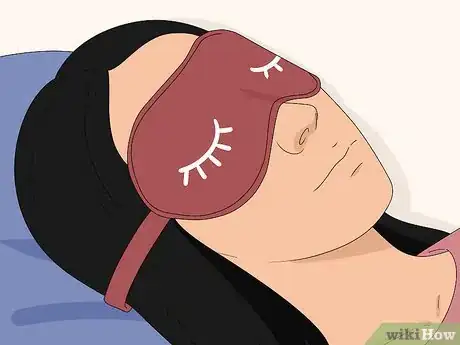


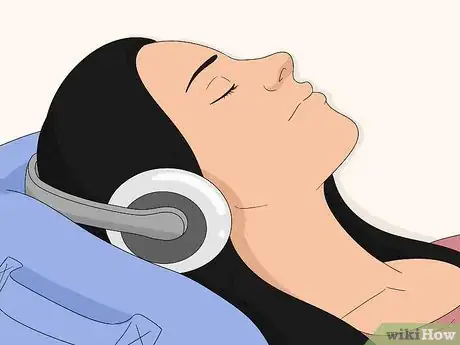
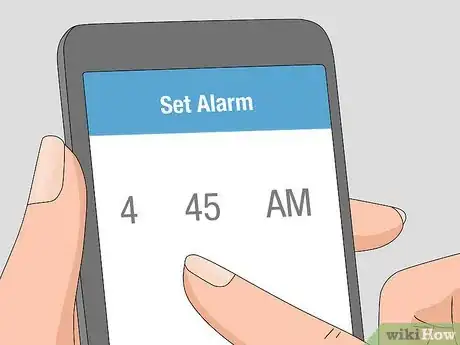

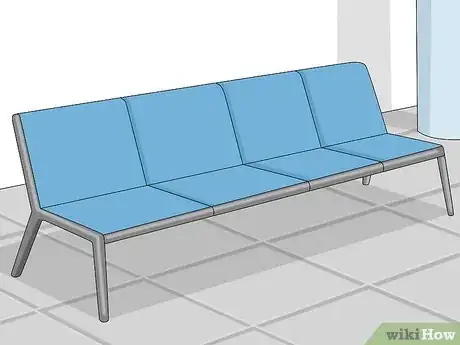

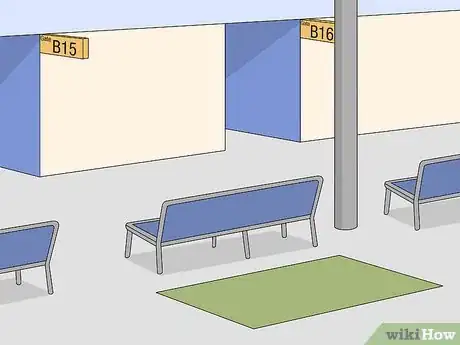


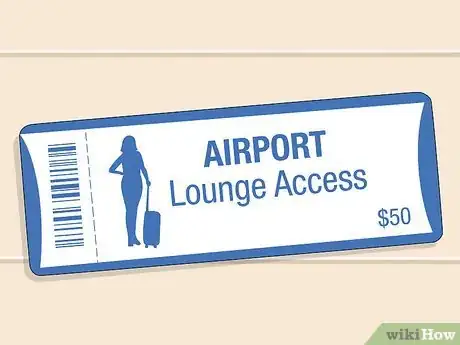
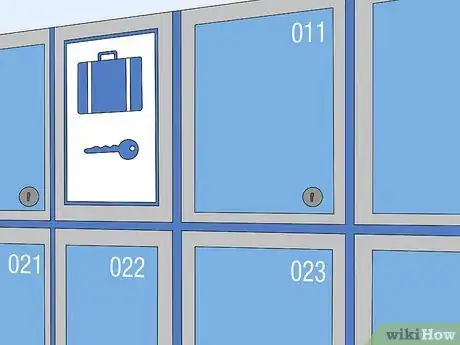
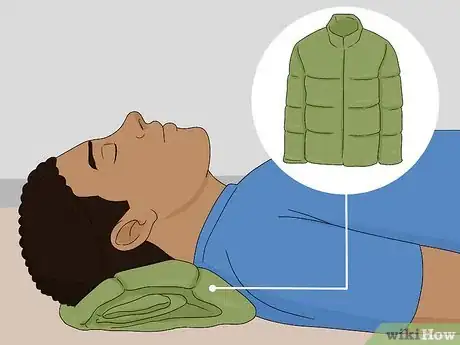
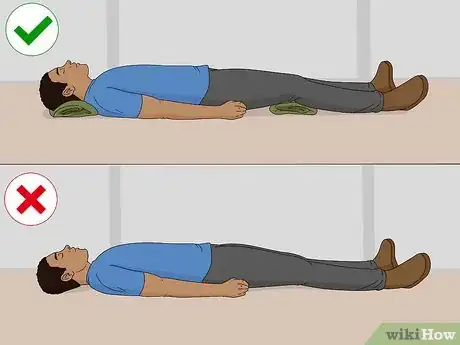





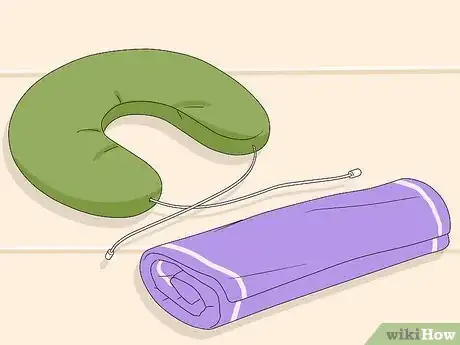



-Step-21.webp)









-Step-21.webp)




































